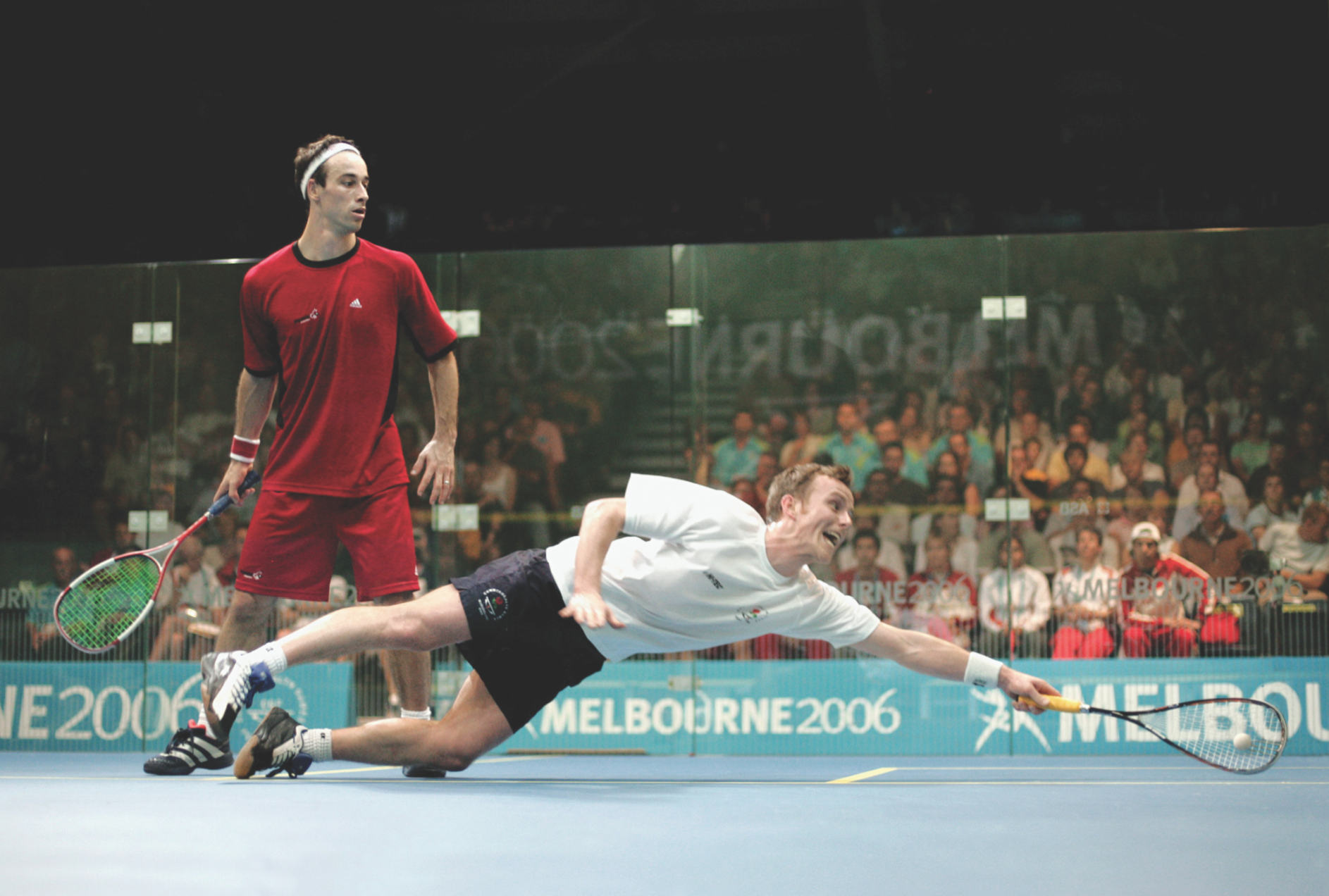
By Richard Millman, Director of Squash, Kiawah Island Club
We spend a great deal of our time as squash players attempting to polish and perfect classic, orthodox form, both in terms of stroke production and movement technique. But what about when we’re confronted with less than ideal circumstances? How often are you practicing cleaning up a mess? For instance, when you’re doing a boast and drive practice are you throwing in the odd straight ball instead of the boast, or if you’re at the front are you sticking the odd cross-court in instead of the drive? If you are, good. That’s a start.
Now here’s something else to try. Instead of just throwing in the straight shot, hit the ball down the middle of the court straight at your practice partner (I mean via the front wall of course!). The way the drill works is that the practice partner who is the target of this seemingly mean piece of feeding should practice making a decision to deftly dance to one side or the other of the imminently approaching ball (hopefully before it transfixes them) and simultaneously shape for either the backhand or forehand. In this drill never hit cross-court—in other words if you shape a backhand, volley the ball into the backhand corner and vice versa. As with all new skills, the feeder should start with relatively innocuous feeds and only gradually build up to a full attempt at bludgeoning the partner/victim as their capacity to deal with the situation is proven. This drill should become a regular feature of your weekly practice regime until such time as the footwork required in dancing to one side or other becomes automated.
Another less than perfect situation occurs when you are required to retrieve a ball lacking practically any time whatsoever to set up. This situation is guaranteed to crop up with monotonous regularity. This is particularly problematic in the next two or three occasions you find yourself on court following your satisfactory completion of a technical session with your club coach. Usually the coach has fed inch-perfect balls, and you’ve immaculately demonstrated the art of a full-flowing, perfectly executed classic backhand or forehand. Don’t worry, this is not your coach’s sick idea of a joke at your expense. The coach will progressively guide you over the next few months as to how to decrease your swing size to fit the time available in any given situation. What I am talking about is a skill famously perfected by that master and father of modern squash, Jonah Barrington. The concept is to extend the racquet to meet the ball, just as it rises from the bounce, exploding in a momentary release of energy. All this should be done, at full stretch, by bracing your body weight against the ball at impact. In this way energy is transferred from you to the ball like one billiard ball striking another. This technique is known as a scramble. When scrambling, the arm and the racquet tip are extended to a point where there is almost no bend along the length of this unusual looking appendage. The racquet face contact is usually flat or even closed and players often use some type of spin (top, side, or a combination of the two), as they carefully direct the ball along the wall or occasionally across the court with great height. The wrist may move very gradually throughout the duration of this guiding stroke (almost like an incredibly, slow, ping pong stroke) but almost never be snapped. The body position would typically be almost horizontal to the ground with the hips and head being particularly low—as close to parallel with the ball at contact as possible. Timing with the Scramble to length is of paramount importance as a miss-time either way will result in a loss of tightness, which is the entire goal of a Scramble.
The final variation of the Scramble that I’m going to talk about in this article is the short scramble of which Alex Gough is perhaps the world’s leading exponent. The very word Scramble sounds like you’re pretty desperate, but Alex has developed an uncanny ability to turn apparent desperation into a cunning opportunity to counter attack. If you get a chance to watch Alex in any of his previous battles (and I would recommend that you invest in one of Jean De Lierre’s wonderful dvd productions—there’s nothing like them) watch carefully how Alex, at full stretch, with a deft sleight of hand applies dastardly top and side spin to a half-volleyed ball that frequently appears as though it has beaten him.
Other particularly fine exponents of the Scramble are Peter Nicol who used it with great aplomb as a counter attack, John White who can Scramble effectively with neither of his feet on the floor, and of course, our new champion Scrambler, Ramy Ashour.
So the next time you’re in trouble, stretch out that arm, get low to the floor, reach out and meet the ball as it comes off the bounce, and Scramble your way forward. After all you can’t make an omelet without breaking eggs!





